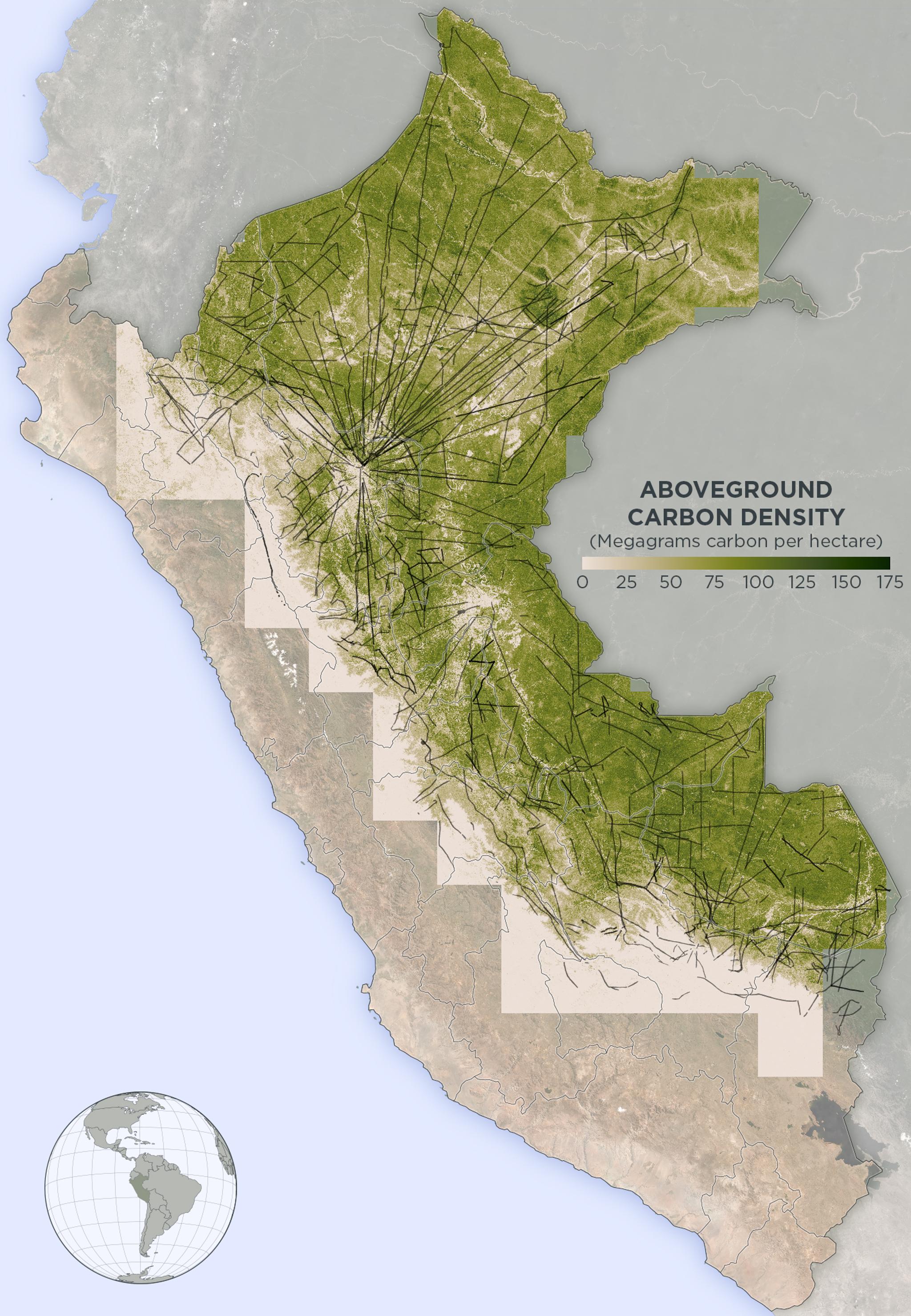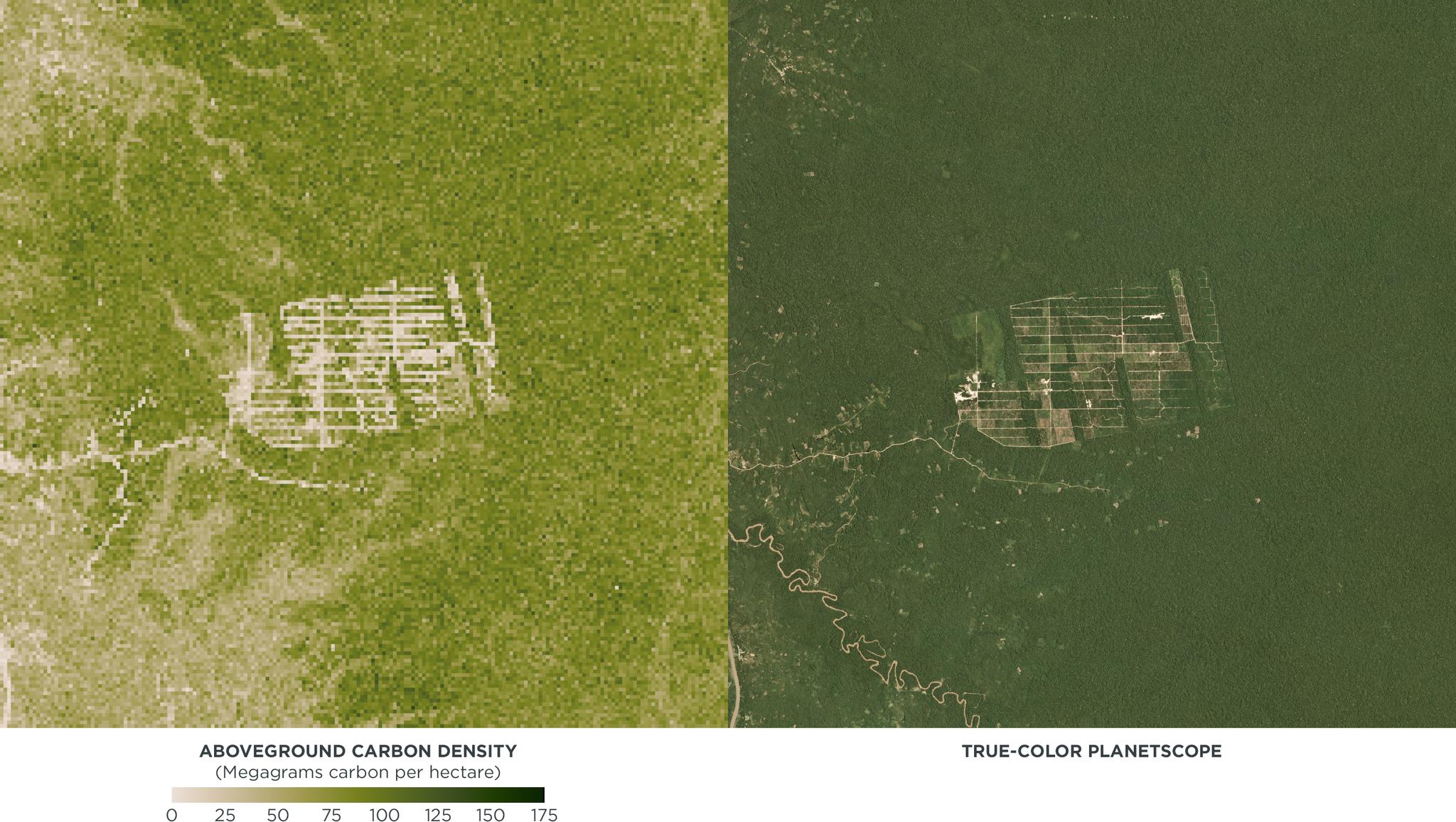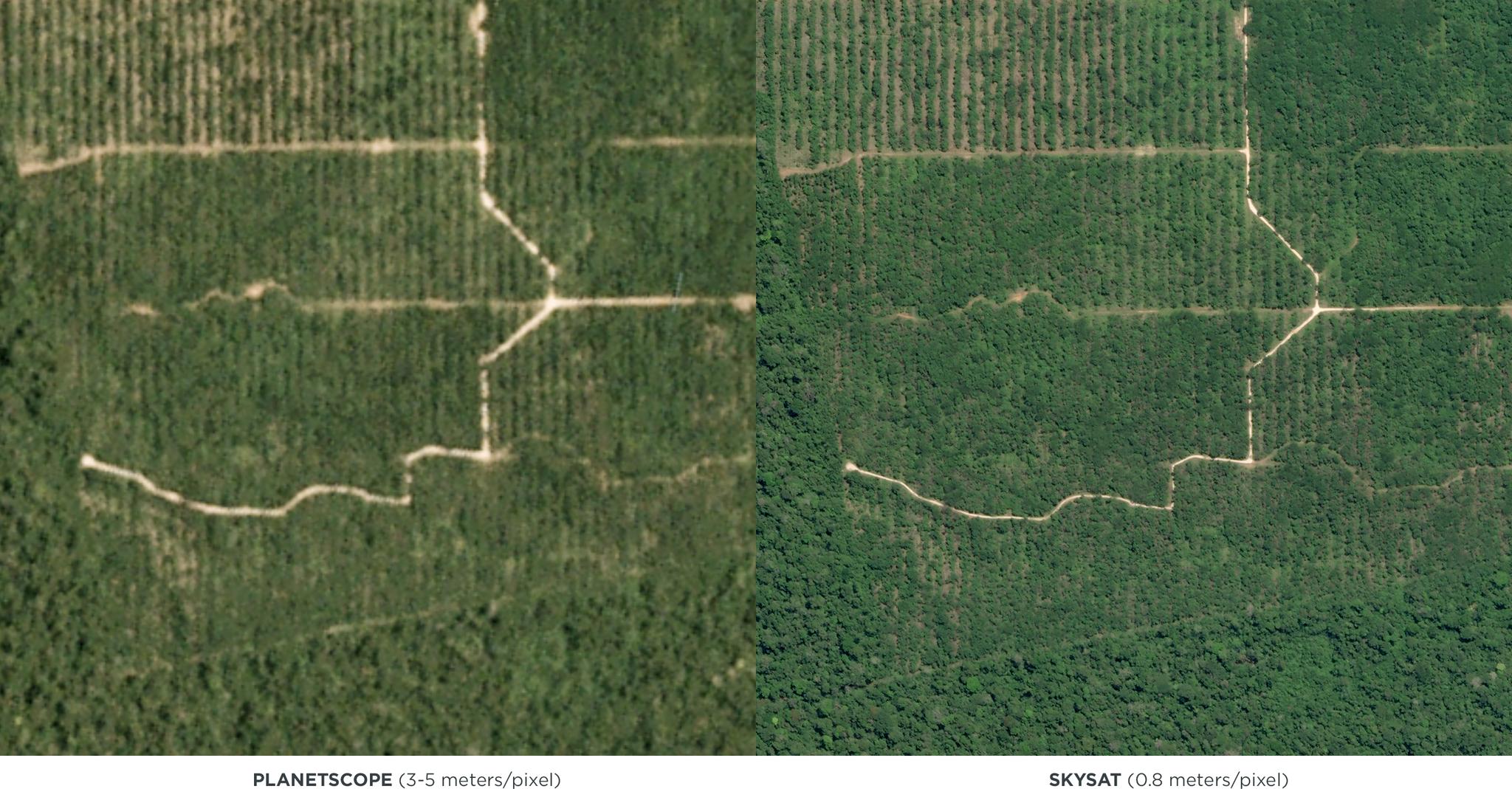Developing the World’s First Indicator of Forest Carbon Stocks & Emissions - Update: IT’S WORKING!

Map of above ground forest carbon in the Peruvian Amazon with LIDAR plane pathways delineated in black © 2019, Planet Labs Inc. All Rights Reserved.
NewsTo view these graphics at full-size, please read our Medium post.
Tropical deforestation has one common cause the world over: economic development. We learn as kids that forests take in carbon dioxide, store the carbon in plants and soils, and release the oxygen (which we conveniently need to breathe). Despite an intuitive understanding of these essential services, we have no practical way of accounting for their value in economic decisions or transactions. The result is that developing countries are incentivized to clear forests and convert the land to commodities production (palm oil, soy, mining, beef, etc.) in order to grow economically, and the world’s largest terrestrial carbon sink has now become our second largest source of anthropogenic, climate-changing carbon emissions. If we are going to stop tropical deforestation, we have to stop the perverse economic incentives that say forests are not a valuable use of land and provide tropical countries with more sustainable pathways to economic development. We need to translate the value of forests - or the true cost of deforestation - into the global economy and find a way to measure carbon dioxide so it too can be quantified and valued, as other commodities in the open market are. Fortunately, new advances in remote sensing and machine learning technologies have the strong potential to help do just that. In late 2018, the Erol Foundation, the Center for Global Discovery and Conservation Science at ASU, and Planet announced a breakthrough Research & Development (R&D) initiative to directly measure forest carbon stocks and emissions at high frequency across Peru. Now at roughly the project’s halfway point, we wanted to provide an update on this effort to develop the world’s first Forest Carbon Indicator. In short: it’s working! Over the past 10+ years, the UNFCCC has forged real leadership on this issue. Under Articles 5 & 6 of the 2015 Paris Agreement, developing tropical countries can Measure, Report, and Verify Reduced Emissions from Deforestation and Forest Degradation (REDD+) in exchange for performance-based payments. The problem? It’s extremely tough to measure REDD+, and this presents a challenge for both delivering on the public performance-based payments and for translating the value of forests’ climate services beyond development finance and into private finance.





Ready to Get Started
Connect with a member of our Sales team. We'll help you find the right products and pricing for your needs.

